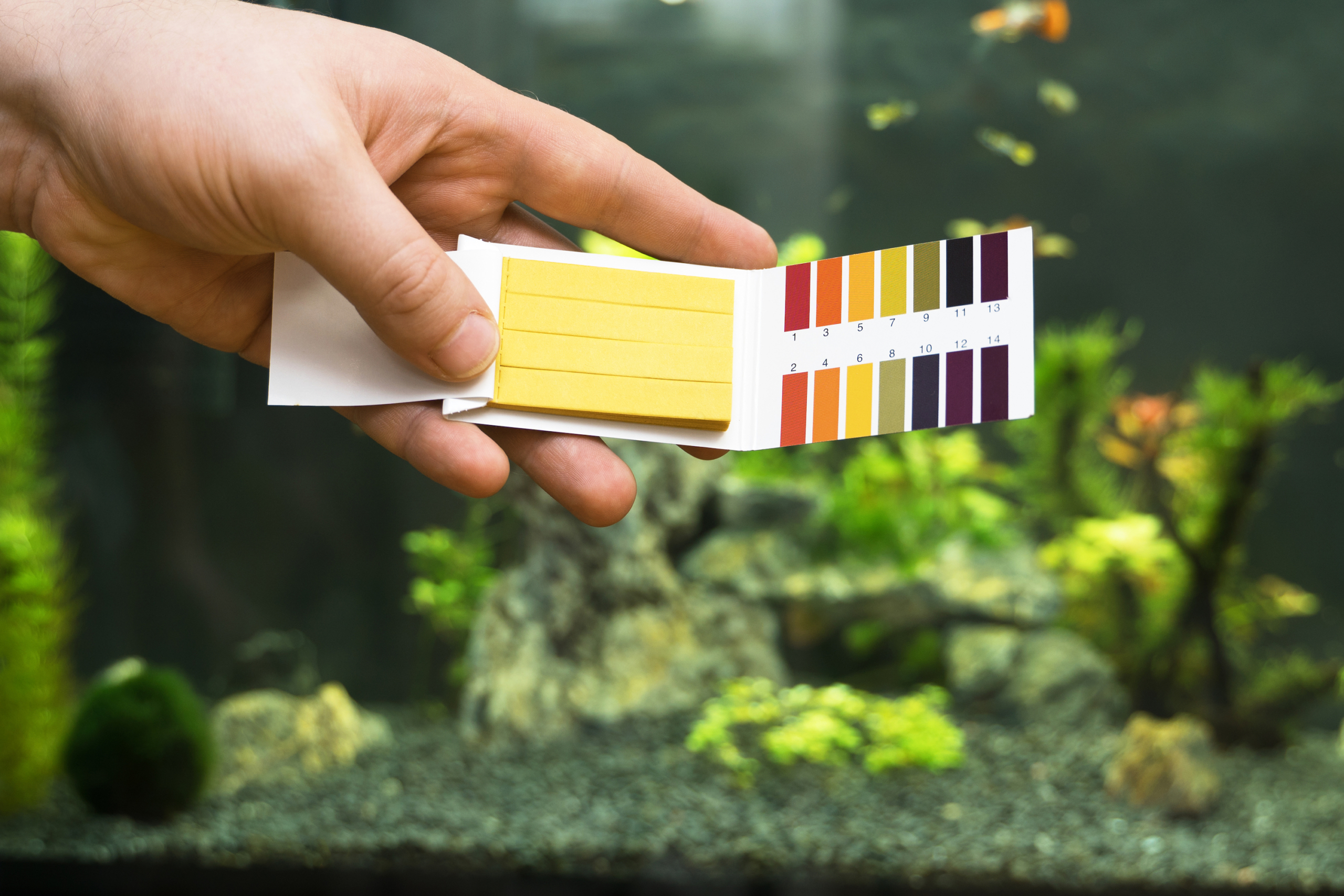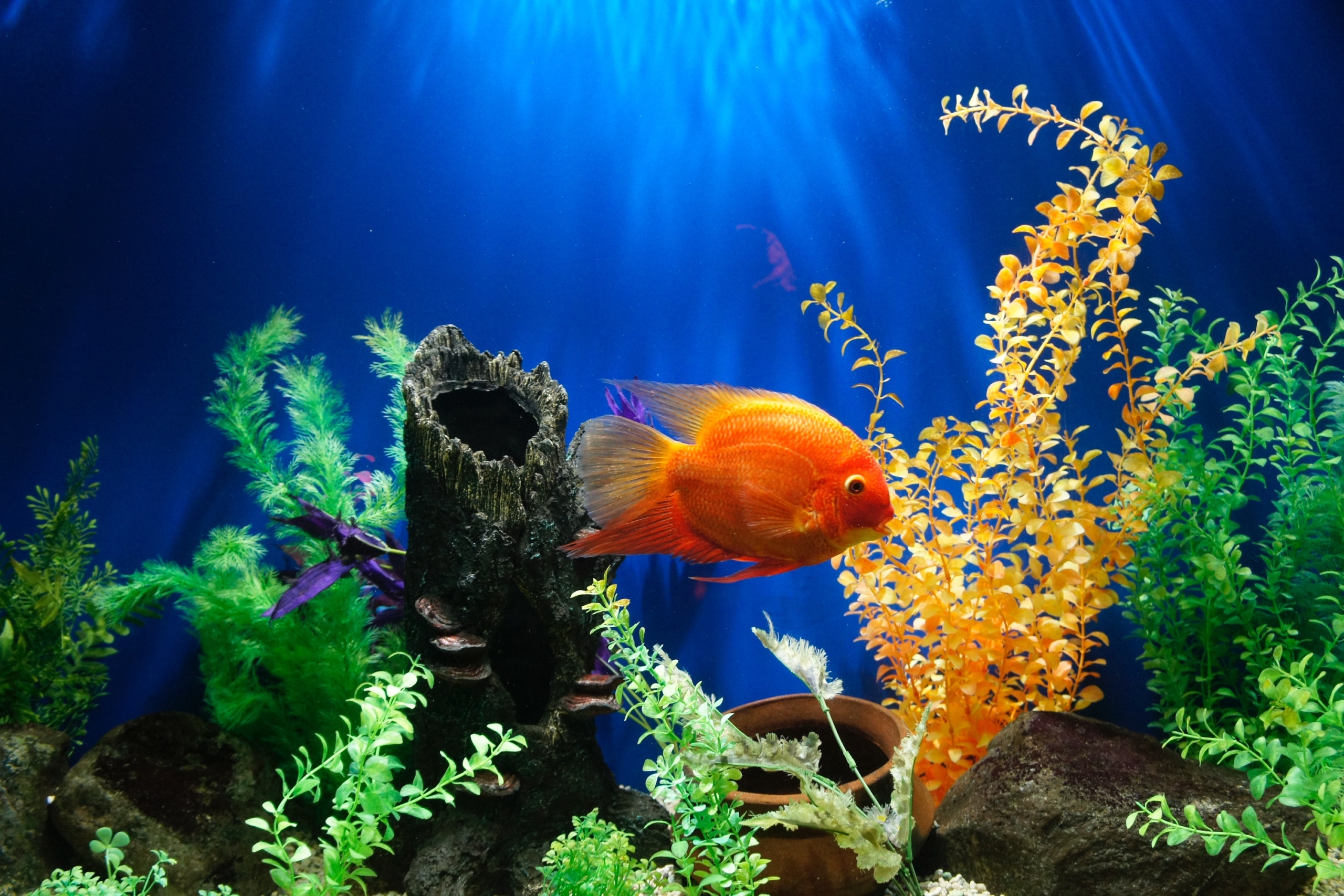All aquarists know that taking care of fish is tougher than it looks. Your bird, hamster, and dog breathe the same air that you do, but tank dwellers have specific needs for their environment that you have to monitor. In addition to oxygen and nutrients, you have to closely watch pH levels. If you think back to high-school chemistry, you’ll remember that pH measures how acidic or alkaline something is (like lemon versus baking soda). The ideal pH will vary depending on your fish and whether you’re looking at a saltwater or freshwater ecosystem.

How to test pH in an aquarium?
To find your pH level, you’ll need a good testing kit and you’ll want to test frequently. Before trying this out, though, check your water source. It’s helpful to know the pH of your water before it goes into your tank when you’re figuring out how to adjust it. For most tanks, you should be testing biweekly to maintain the correct levels. Keep a record of every reading and check water under the same conditions each time, meaning the same time of day and approximately the same number of hours after feeding.
You have a few different methods for analyzing your water, ranging from testing strips (least accurate) to digital testers (most accurate). With strip kits, you first draw some of the tank water into a tube. Next, you add a drop of the testing solution and wait for it to change color. Compare the water color to the color-coded strip, which will tell you the pH value of your tank. You may need more than one kit if you have different tanks with different pH requirements.

What is a good pH level?
The optimum level will depend on which fish you have in your tank and what the environment is like. Generally, the pH of a freshwater tank will run a little lower than a saltwater one. For freshwater, you’re looking at anything between 6.5 and 7.5. Adjust depending on the fish you have and be mindful about putting together only species that like similar acidity levels. Some freshwater fish fall out of this range, too, like certain types of tetras, which means you’ll have to find others who can coexist in that specific range if you mix species.
For a saltwater aquarium, you want something more in the 7.6–8.4 range, but reef tanks need to stay on the higher end. If you’re growing coral, you need to pay particular attention to stabilize the pH between 8.0 and 8.4, so make sure the fish you have will thrive with the coral.
What causes high pH in an aquarium?
You may test your water when you set up your tank and find it perfect, but slowly pH starts to creep up or down. A few things can cause this, and unfortunately, some very regular processes can contribute to it. If you notice your pH level going up, it could mean you have too many plants or stones. Because plants “breathe” CO2, they can change the water quality toward alkalinity. Your rocks, too, might slowly dissolve, releasing calcium into the water. These are both common problems and easily fixed by removing some of the offending decorations, then testing again for any change.
The symptoms of low pH in a fish tank are a little different. This usually results from fish waste that is not properly filtered out. Sometimes fixing it will be as easy as replacing your filter pieces to bring them back up to maximum ability.
How to fix your pH level?
There are some quick ways to raise or drop the level, but determining the culprit behind your pH issues will be just as important, or it will keep getting out of whack. Commercially available treatments will help easily change things up. If your pH is too low, adding a few more rocks or shells will make a difference and will keep working, rather than acting as a one-time fix. Likewise, removing these and adding driftwood or peat moss brings down your pH level.
Unfortunately, significant pH drops, or very acidic water, can kill your fish, so you need to be vigilant about testing and adjusting. Living in water not right for your fish will cause extreme stress and even burns on his skin if it’s too far outside his comfort zone. Remember, staying relatively consistent within the range is important, too. With proper testing, you’ll keep him happy in his perfect environment.


